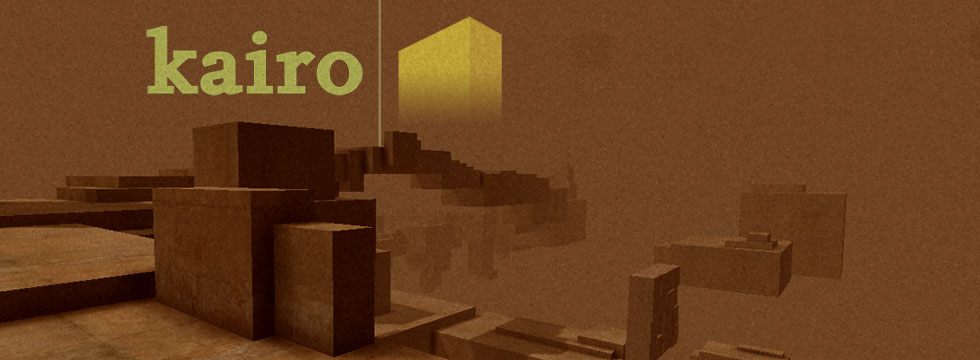
Ever wanted to be a bounty hunter in the days of the wild
west? If that's the case you're in the right place, Call of Juarez delivers
that experience and more, placing you into the boots of Silas Greaves, a
wondering gunslinger in the last days of the wild west. The game begins when an
older version of the character walks into a bar and starts to talk to people at
the bar about his adventures as a bounty hunter. In these first moments we are
given an insight into the characters infamy as the bar patrons questions the
legitimacy of the stories that were written about him and his bounty hunting
ways. This first scene is very important as it lays the ground work for how the
narrative is delivered to the player, It also sets the tone of the game as well
as the art style that the creators Techland were going for. Like the wild west,
the games aethstetic is gritty and delivered through animated cutscene's that
look like something from a noir comic book. The use of colours are minimal
during these cutscenes which is great as it seems to try and not take too much
away from the parts where the player is actually playing. The narrative of the
story is delivered through flashbacks told by the main character to those in
the bar who would want to listen.

The narration is carried over to when the
player is actually playing the game as he narrates while the player plays. The
first scene the player is introduced to that they are able to take control of
is an outdoor ranch areas. We go from the narrative being delivered by comic
book like panels to a first person shooter in a 3D environment. Even though the
player has been transported to this 3D space to keep with the gritty theme of what
has been shown to the player so far, the 3D environment has cel-shading on it.
The cel-shading is done in a way where it still keeps with that comic book and
gritty feel of the west. It's not clean outlines, the lines are jagged and
jarred. The textures used also convey that rusty look that would be expected
from a western film. The first scene is setup in such a romanticised way that
immediately you feel like a courageous cowboy gunslinger parading around the
ranch to save your fellow cowboys from the local militia, the architecture that
we can see from the side of the road shows clearly that the player is in the
wild west. The broken down wooden fences and house clearly goes on to further
the idea of the rough feeling that the west places upon the location. The game
has established throughout the start that it is a linear experience and does in
no way try to trick the player into believing otherwise. It is through this
view that the player can sit back and enjoy the game as a complete experience
on its own rather than relying on previous games in the series to fill in the
gaps. In your first interaction with an enemy, the narrator tells the people in
the saloon that he had no choice but to take out these militia guards as they
were already too many in number and if he were to make it out of this alive he
would have to take them down. This is a very simple and straight forward way
tells the player that he will have to kill the guards in order to advance
through this portion. The design and flow of the level sets the tone for a
shooter perfectly, when the player arrives on the ranch your forced into a
bottleneck where they only way to get into the house is to go forward through
where all the enemies are firing at you from. The game places big rocks from
where the player starts to where the player has to go, they are spaced out
evenly to provide the player with cover to get closer to make his shots. The
rocks however do not seem out of place and fit with the theme of the wild west,
there are also old broken farm carriages laid out near the rocks as well. Once
you make it through this first part the game leads you into a different part of
the ranch where the water tower is. The game goes on to place great importance
on the man standing near the water fountain and the narrator goes on to talk
about how enemies in this position are deadly because they have the high
ground. The game spends time zooming in on this to signal to the player to take
him down first as a priority as with the high ground your an easier target to
shoot. This is when the player is introduced to a mechanic that is somewhat
like a last chance dodge. When a bullet is first and if it has the potential to
kill you the game slows down and the player needs to choose whether to dodge
left or to dodge right, flicking the left analogue stick in the direction
opposite to the bullet allows the player to dodge and stay alive, it then
indicates to the player that there is a gauge at the top right of the screen
that refills when it is full again it allows the player this lifeline option
again.
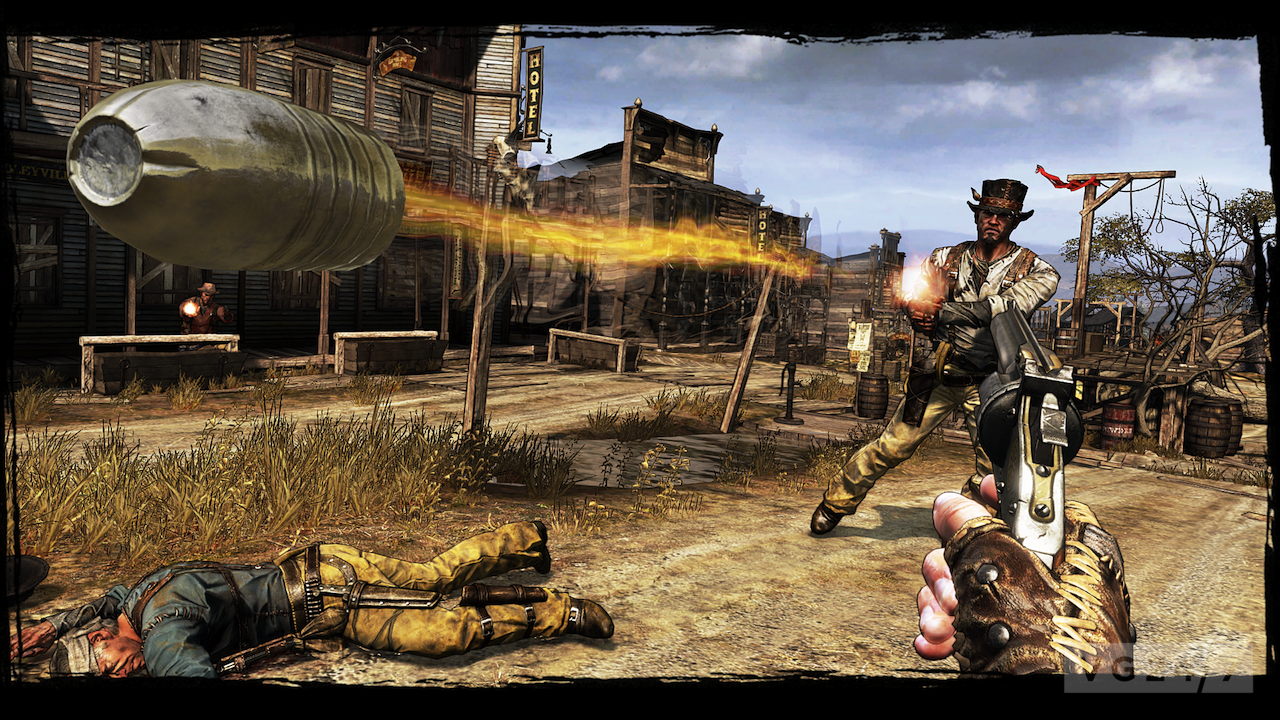
I felt that this was a great mechanic as it gives the player that
feeling of invincibility that the wild west instils in the mind further
building on and fully pushing the theme of the wild west. This introductory
level is used to teach players the mechanics like any good video game should.
It is in these first moments that the player is taught about how the firing of
the weapons work, how the player can dual wield and also how slow motion works
within the game. From here the player is lead by the narrator into the house
where 'Billy the Kid' is held up. Going through the classic trope of the west a
showdown between the outlaws of the west and the government hounds tracking
them down. The player is given the experience of holding up within the house
for as long as possible while hearing the narrator talk about the adventure he
had. When it came to the time where the player has to make a run for it, the
narrator says 'I then ran to get the horses from the barn', a subtle push to
tell the player that it's high time to leave, If the player doesn't leave the
narrator then repeats himself, 'It was at this time that I went down to the
barn to get the horses'. I thought this was a great nudge to the player to move
forward within the game. When the player goes to the barn to get the horses
there is an overwhelming amount of enemies showcasing the desperation that
these characters are in. Upon entering the barn the player is then shown
another side of the game, the showdown. It is here that the player gets to feel
what it might be like to be in a shootout in the west. The use of both analogue
sticks to keep focus while using the other to get a faster draw balances really
well, as the player has to keep an eye on the opponent as well as an eye on the
holster. As soon as you see the opponent draw his gun you could then draw yours
and shoot. This scenario happens many times throughout the game yet it doesn't
get to the point where it feels like its tacked on.

The way it is handled with
the use of the story telling and the mechanic itself really feels well paced.
However even though you win the dual in this case, the narrator back tracks and
tells the story differently which I felt was a genius way to tell the story.
Like most people the idea of thinking back to past events can be hazy, this was
a really great way to show how the ideas of flash backs can be played with and
doesn't necessarily need to be coherent. This is done a couple of times
throughout the entire game, and is also sometimes done in real time 'and out of
nowhere a ladder appeared' and literally a ladder would be put into the game in
real-time to allow the player to advance forward. This was an interesting way
of stopping the player from advancing forward to much without completing an
objective. The start to Call of Juarez could even be compared to the start of
the game to the Prince of Persia the sands of time. It has many similarities to
how the game begins, how the foundations are set in a similar way, how the protagonist is talking about past
events, how the game has a mechanic that manipulates time in some way, and how
the beginning level's layout is made in a way to guide the player carefully
through the start showing them the ropes the whole way. The difference's here
are to do with the setting, the theme, the game play

genre and ultimately the
narrative. Call of Juarez is a first person shooter where as Prince of Persia
is a third person action game. To me this shows that good game design on a
basic level no matter the genre cannot be overlooked. The flow of the first
level is very important in keeping the player interested in taking the next
step to go to the next stage and the stage after that to complete the game. I
really enjoyed how the game unfolded however the only gripe I had with the game
is that at the end of it the player is forced to choose revenge or redemption,
after playing as Silas you discover that at the end of his tale the bar he
walked into has the man who killed his brothers in cold blood.
The twist at the
end where he is telling the entire story to this man who killed his brothers is
a stroke of genius but giving the player the choice of whether to take revenge
or not was a strange move. I played both sides to see how it ended and felt
that the revenge option is the true ending, my reasoning for this is that it
made more sense for Silas's character to do this, the wild west is a place
where an eye for an eye makes sense, the story told from Silas did not in any
way show that he was a forgiving man. This game was enjoyable from start to
finish as it was a complete experience and didn't try to change the characters
perception of the west, it showed the player its view of the wild west and how
real world people could be spun into a tale of fiction while helping stay true
to who these people were portrayed to be in real-life.
References for images from top to bottom
http://cdn2.gamefront.com/wp-content/uploads/gallery/gunslinger/2013-05-24_00001.jpg
https://i.ytimg.com/vi/Yo0V62TAqZ8/maxresdefault.jpg
http://assets.vg247.com/current//2013/04/call_of_juarez_gunslinger_4.png
http://cdn.mashthosebuttons.com/wp-content/uploads/2013/05/204450_screenshots_2013-05-22_00007.jpg
http://static1.squarespace.com/static/50d0fc0ae4b0c75e54db0249/t/51ebff40e4b01b84c0892a8c/1374420802746/The+Good,+The+Bad,+%26+The+Ugly.jpg
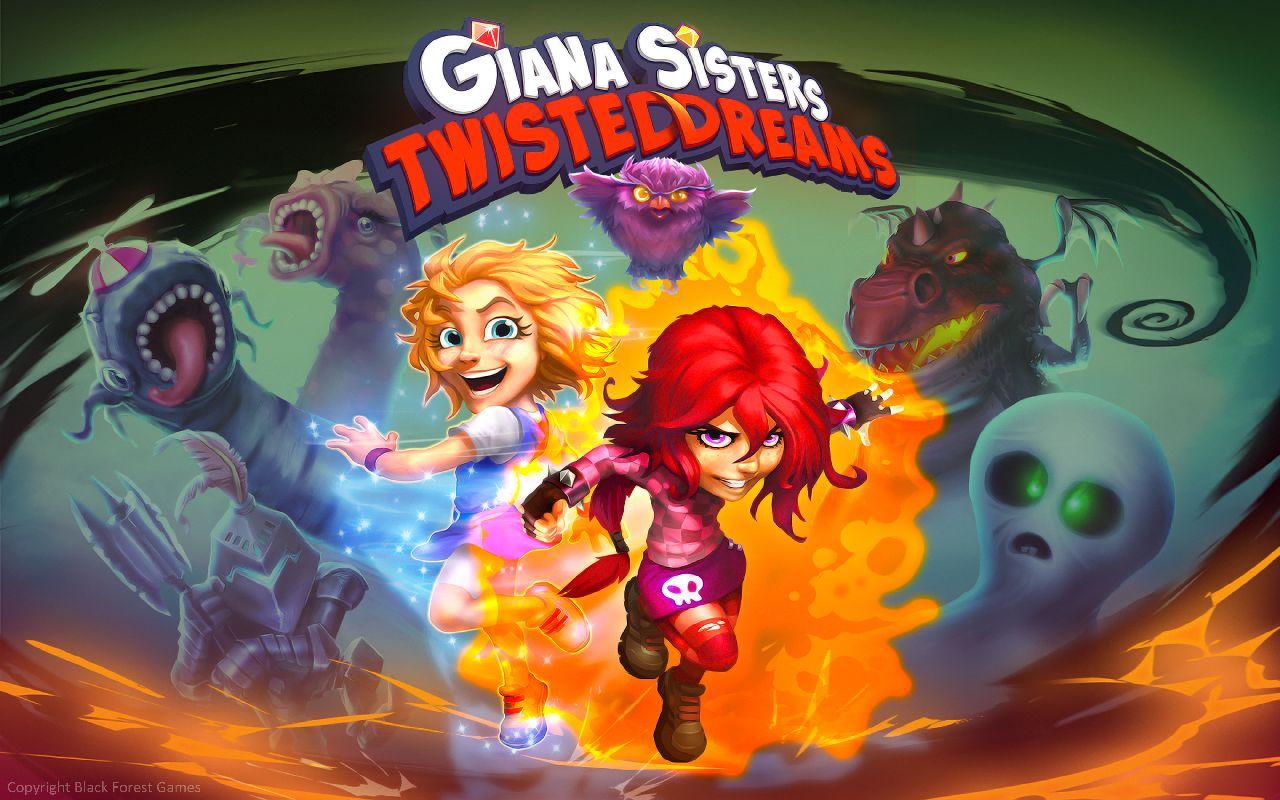


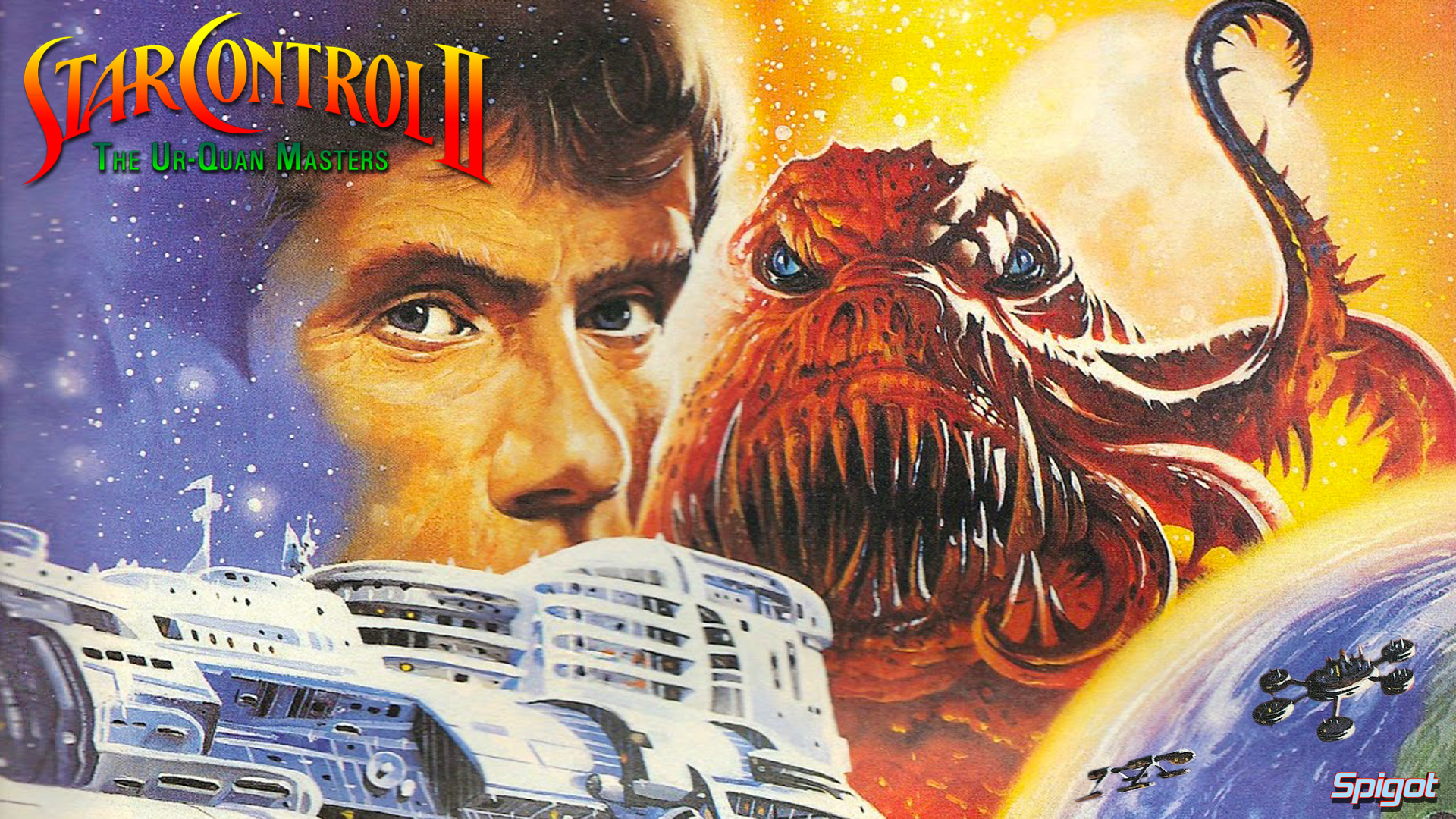

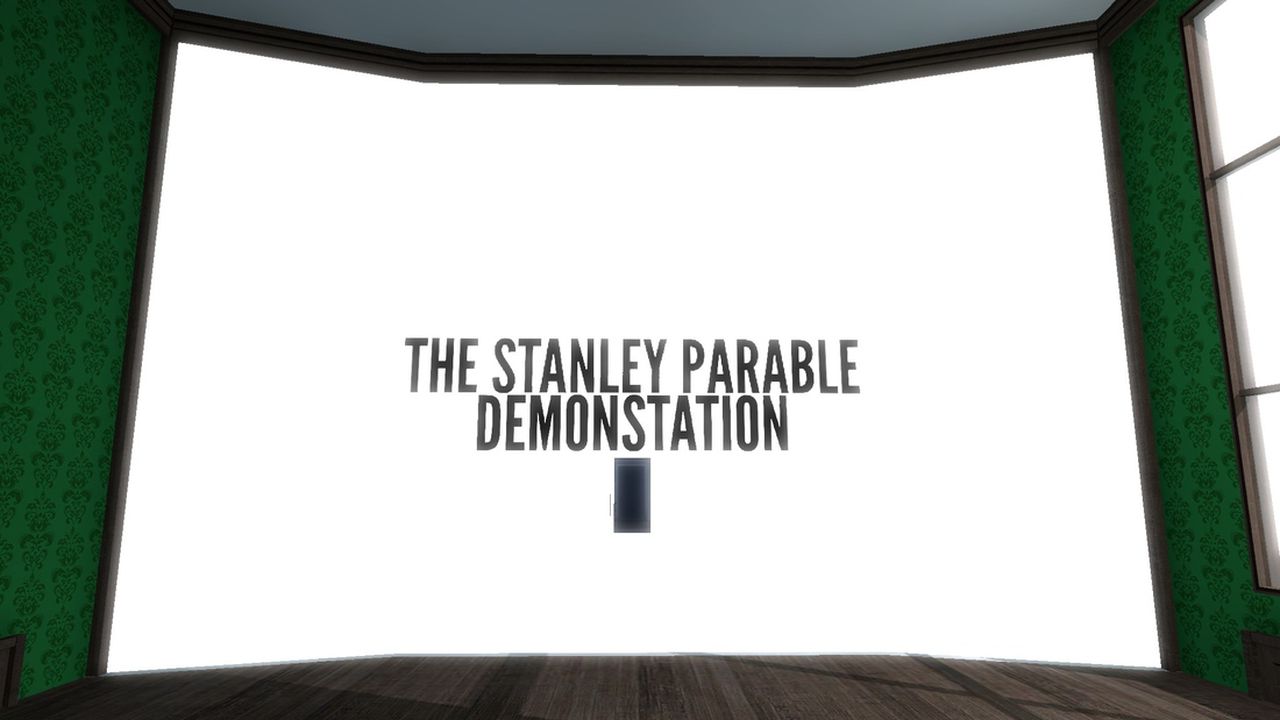








 genre and ultimately the
narrative. Call of Juarez is a first person shooter where as Prince of Persia
is a third person action game. To me this shows that good game design on a
basic level no matter the genre cannot be overlooked. The flow of the first
level is very important in keeping the player interested in taking the next
step to go to the next stage and the stage after that to complete the game. I
really enjoyed how the game unfolded however the only gripe I had with the game
is that at the end of it the player is forced to choose revenge or redemption,
after playing as Silas you discover that at the end of his tale the bar he
walked into has the man who killed his brothers in cold blood.
genre and ultimately the
narrative. Call of Juarez is a first person shooter where as Prince of Persia
is a third person action game. To me this shows that good game design on a
basic level no matter the genre cannot be overlooked. The flow of the first
level is very important in keeping the player interested in taking the next
step to go to the next stage and the stage after that to complete the game. I
really enjoyed how the game unfolded however the only gripe I had with the game
is that at the end of it the player is forced to choose revenge or redemption,
after playing as Silas you discover that at the end of his tale the bar he
walked into has the man who killed his brothers in cold blood. 

